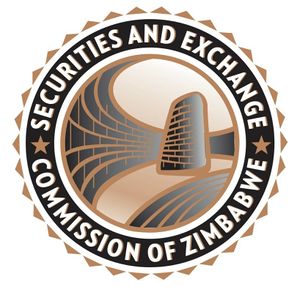Single currency would be more stable
The mid-term monetary policy review published at the end of last week shows the fundamentals of monetary policy are being maintained at the sort of levels required by a functioning economy with a functioning currency.
In particular the two most crucial components, the balance of payments and the money supply, which needs to coupled with the exchange rate when we are maintaining a tight local currency money supply, are both at the sort of level that should allow a speed up in movement towards a monocurrency domestic economy.
The reason why the exchange rate is so important in looking at money supply is that, in real terms, the supply of money can only increase at roughly the same rate as economic growth so regardless of what the nominal numbers are, it is not really possible to increase money supply in real terms any faster.
If the supply of local currency moves upwards faster than what the economy can back, you get that hyperinflation that has so bedevilled Zimbabwe’s economy in the last two and half decades. Even if the hyperinflation is hidden, as it was for much of the dollarisation era, it is still building up and will one day explode.
This is why “sound money” depends on the double of the correct fiscal policy and monetary policy, and they both have to work. Since the advent of the Second Republic there has been a sound fiscal policy, with the Government using what it earns, basically its tax income, to run the country.
There has been a small budget deficit at times, but this amounts to only a very modest fraction of the capital budget. Most of the capital budget and certainly all the non-income producing share, is covered by taxes, and all the general running costs of Government.
That means that any borrowing can be covered by the almost immediate fraction of the improved income that comes from capital investment, rather than the general economic growth that might take years before it covers say social capital spending, such as better health.
The mid-term report from Reserve Bank of Zimbabwe Governor Dr John Mushayavanhu goes into considerable detail over the sort of measures being taken to control liquidity and control broad money supply, with the rise in that broad money supply largely one-off rises as banks resume lending in local currency from their pool of deposits.
More future lending will come from the sums released as repayments are made, rather than from increasing the percentage of deposits allocated to lending.
Even then, that lending is largely for production, not consumption, and the ratio of lending to deposits has been held at just over 50 percent, which is very conservative banking.
On the foreign exchange front, Zimbabwe is maintaining a positive current account balance despite being hit by a very severe drought that has pushed up imports of food, almost all by the private sector.
The surplus on that account will slip a bit this year as a result, but will still be positive. Again positively, that surplus is now better distributed across the year.
The new currency, the ZiG, has been continually and fully backed by the Reserve Bank and in fact the backing rose from around three-fold on the April launch to four-fold by the end of July.
The policy of increasing reserves is being maintained, but the goal now is more advanced, to move towards the sort of reserves of global best practice, and that tends to measure months of import cover, something new in Zimbabwe since the country was shoved out of the then sterling area at UDI.
The positive balance of payments, even in a “bad year”, the tight control of money supply and liquidity, and the very conservative fiscal policy of the Government would in a normal economy with a monocurrency domestic trading environment mean a very stable pro-growth economy.
In theory all incoming foreign currency would be converted on arrival into local currency in such a system, but it would still be perfectly possible to give net exporters say 30 days to sort out direct payments for their imports and dividend payments.
Those receiving diaspora remittances could still be allowed these in foreign currency, but they would have to convert before they spent anything for say health bills or food, so most of the that money would end up in the banks as well fairly quickly.
With the overwhelming majority of export earnings and diaspora payments ending up quite quickly in the banks, there would be enough, in fact because of the positive currency account a bit more than enough, to cover imports and other foreign currency payments.
The stresses on the economy at the moment occur because of the multicurrency system, and the deep desire by those with retained export earnings and diaspora remittances to stockpile their foreign currency.
The hope has always been that exporters and diaspora remittance receivers spend that foreign currency directly in the local market, but this is partly inefficient, and until recently allowed a lot of messing around in the black market.
The black market may have largely been killed, now accounting for just 5 percent of currency trading and likely to diminish further, but the unexpected situation has arisen whereby dealers are making quotes, even though they cannot do business at those prices, and we still have a lot of people, including some who run large businesses, who regard the black market rates as something real, rather than something virtual which is the case at the moment.
That has seen the use of these rates to set prices, and because all in business have to give their customer the choice over currency to be used, that means we have that old fiddle of starting with the US dollar price, converting to ZiG at the retail or interbank rates, then converting back at this virtual black market rate and using that as the US dollar price, which can be converted on payment to the legal retail or interbank rate. Prices just rise, without any rational basis except what someone in an Avenues flat has sucked out of the air.
This has seen retailers looking at replacing some of these overpriced local products with imports, with OK Zimbabwe for example studying using Turkey and other countries as replacement suppliers. So in the end this manoeuvring by Zimbabwean producers is not going to work, but it will put more strain on the balance of payments and damage industry.
Even with all fundamentals in place, and even with a continually growing percentage of the domestic trading and domestic money supply in ZiG, we still have a dual economy with severe connection problems.
There is now a murmur, but a strengthening murmur, to move fast towards a monocurrency domestic economy to remove these unnecessary stresses and liabilities. Ideally such a move would be backed by a fairly modest short-term facility from the International Monetary Fund, who once they had checked out the fiscal and monetary policies, would ante up to cope with the transition jump.
But we could do a lot of the work ourselves once we had built up the reserves to levels where there was adequate cover for almost all the money supply, the combination of both foreign currency circulating as well as the ZiG, thus ensuring that on transition the new ZiG levels would be covered.
This is perhaps something the Reserve Bank and the Government should be considering and perhaps are considering with their determination to build reserves.
People might have got used to the multicurrency and the US dollar sections of the economy, but they can adjust and would probably accept the change so long as the fundamentals, including very tight control of money supply, were in place, the black market was almost totally supressed, and there was a high level of stability.
The other option, of a foreign currency monocurrency economy, has sort of worked in the past, although it produced incredibly tight liquidity until there was a degree of unsustainable slackness in fiscal policy, and it made Zimbabwean products uncompetitive. We need to be able to use our own monetary policy to help grow the economy.-ebsinessweekl










